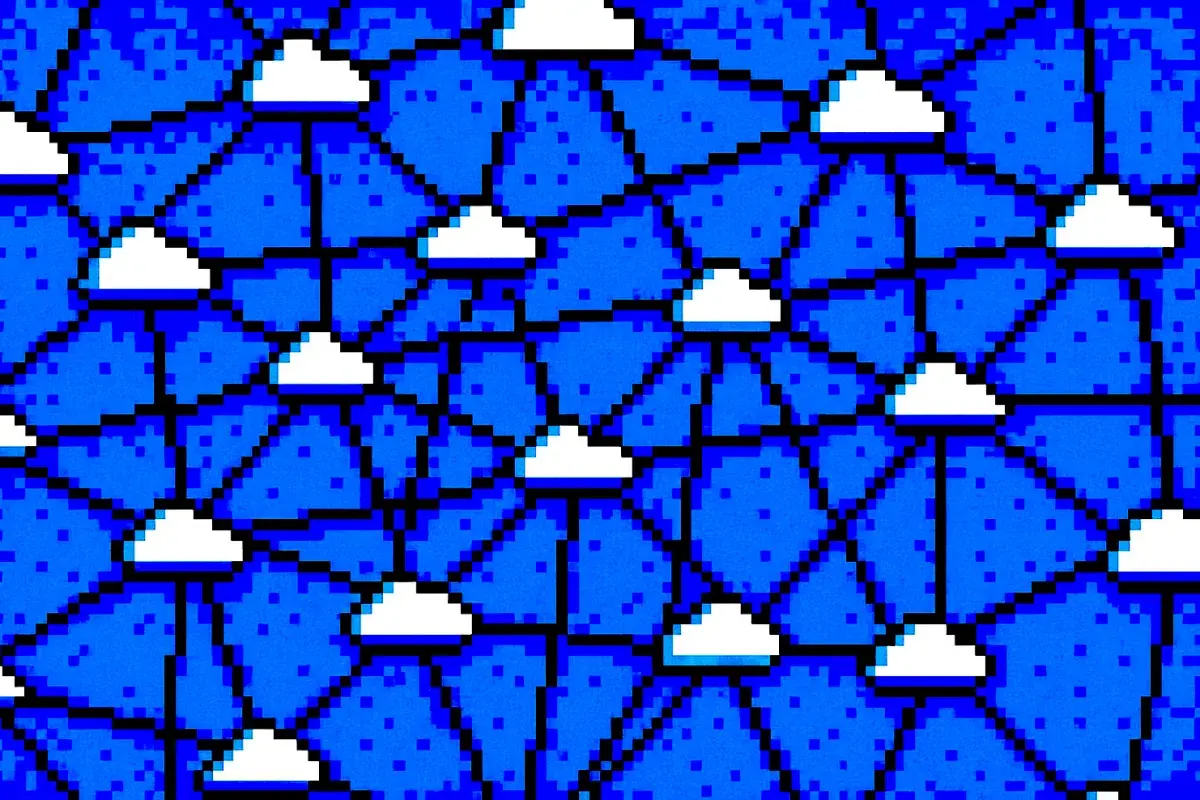
Working in creative bursts
I’m coming to accept that I work in creative bursts — intense periods of production, followed by quiet introspection.
October 14, 2025
It’s easy to get stuck inside a hamster wheel of doing when making things on the internet.
The usual platforms most of us depend on to reach an audience make us believe that we need to constantly be creating — ugh — content, under the threat of being forgotten or rendered obsolete.
Such is the nature of the Internet, we’re led to internalize. “So you better adapt to the way things are done now, old fart, or get left behind.”
But here’s the thing: this is just one model of how the internet works.
Abstracted out of it are the fundamentals of how things actually work under the hood — the technicalities that most platforms have conveniently removed out of sight, in a concerted effort to keep us trapped inside their data silos.

A photorealistic map of the internet
At it’s most pure form, the internet was never meant to be centralized the way it is now, with just a few massive platforms capturing the vast majority of human attention.
If you’ve been long enough on the web, you might remember the forum boards, the IRC channels, the absolute insanity of early web development.
Somewhere along the line, we accepted corporate blandness as a good enough replacement to the thing that made the internet great. The weird and quirky wasn’t in accordance with the ROIs expected by the shareholders, so it got smoothed out.
It’s not even just the fact that, by adhering to the standards of a third-party platform, we’re slowly turning ourselves — and culture along with us — into tiny little blobs of sanitized sameness.
No matter how much effort we put into Instagram carousels or Youtube thumbnails, how clickbaity the titles, and how SEO optimized the captions — we are still depending on somebody else’s interface, search mechanisms, and rules to play.
For as long as this is so, were are operating on rented digital real estate. Because of this, we can just as easily be affected by algorithmic volatility, lose control on how the relationship with our audiences happens, relying on someone else’s permission to run our own thing.
So what are these fundamentals abstracted away for the sake of our convenience?
Underneath all the feeds, likes and memes, the internet is just a bunch of computers talking to each other, sending and receiving little packages of information across invisible wires. Everything else — every app, platform and tool — is just an interface built on top.
We used to write our own code, host our own pages and connect them to our own domains, decide what was shown and how, link them however we wanted.
This meant we had to learn how things actually worked. What broke, what loaded. How one line of code could change everything. Without necessarily thinking about it, we were becoming literate — technically and creatively — in the Internet as a medium.
There was a learning curve to it, but in exchange we had full creative freedom, but most importantly: ownership and permanence of the thing we built. No shadow bans, no takedowns, no annoying policy updates.
Now, platforms wrap all that behind shiny dashboards. They own the hosting, domains and links, control the distribution and access to an audience, and decide what a “good performance” looks like.
Things are easier, sure. But convenience always comes at a cost: we no longer need to know how the internet works, and that ignorance is precisely what keeps us dependent.
And I don’t mean to look back at the past with rose-tinted glasses, but as I struggle to build my own platform, and as I continue working with clients going through the same thing, I am reminded of why it’s important for everyone looking to build something on the Internet to understand these fundamentals.
It doesn’t mean that you have to write your own code, but you do need to understand what’s yours and what isn’t.
Your domain? Yours.
Your mailing list? Yours.
Your Instagram followers? Not yours — they belong to Instagram.
This awareness changes how you think about your online presence. Placing your website at the center of your ecosystem, while all other channels become roads leading people to it.
With time, trends and platforms might change, but by consistently taking care of your website — the one place on the internet you will always own — you build something that lasts.

Sergio Camalich Morales
I am Mexican Graphic Designer, Photographer and Artist, writing about the underlying craziness of reality, and other stuff.

I’m coming to accept that I work in creative bursts — intense periods of production, followed by quiet introspection.

Buy into the systems, do the courses, get all the help you need. But at the end of the day, don’t take somebody else’s path — as valuable as their insights and experiences might be — over your own.

As AI becomes more human-like, and the world lures us with its hypercontextualized delights, that which can’t be scaled to infinity will become more valuable than ever.